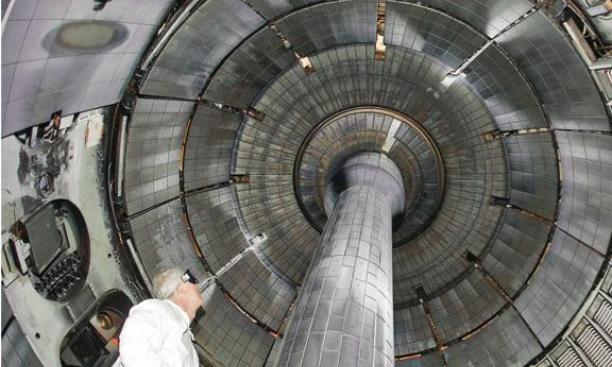

Since the end of the Second World War, our nation’s universities have been the primary locus of federally sponsored research, thanks to the government’s belief—to quote a seminal 1945 report—that scientific progress stems “from the free play of free intellects, working on subjects of their own choice, in the manner dictated by their curiosity for exploration of the unknown.” By linking fundamental research to the education of the young, America’s scientific enterprise acquired a unique vitality and elasticity, yielding discoveries and applications that have immeasurably improved our lives.
Among the most enduring products of this relationship is the Princeton Plasma Physics Laboratory, one of 10 national laboratories overseen by the U.S. Department of Energy’s Office of Science. Located on the James Forrestal Campus and managed by the University, PPPL traces its beginnings to a brilliant astrophysicist and member of our faculty, Lyman Spitzer Jr. *38, who is best remembered as the father of the space telescope. Spitzer’s fascination with the heavens, both stellar and interstellar, also led him to pursue another challenge—recreating the thermonuclear reactions that occur in stars in a controlled environment on Earth. He knew that these reactions, which involve the fusion of atomic nuclei, release large amounts of energy that could in turn, if properly contained and harnessed, provide the world with an all-butinexhaustible source of electric power. Fueling this process would be plasma, a super-heated gas that can be controlled in a reactor through the skillful use of external magnetic fields.
Sixty years ago, with the support of the U.S. Atomic Energy Commission, Spitzer set about the task of designing a magnetic fusion reactor—a figure-eight-shaped tube that he would call a stellarator. What began as a classified research project in a former rabbit hutch—yes, that’s right!—has now become a global collaboration, with some 435 employees, 35 Princeton graduate students, and 250 visiting scientists at work on an 88-acre site just a few miles from Nassau Hall. Federal funding amounted to approximately $90 million last year, making PPPL the single largest recipient of sponsored research dollars at Princeton.
The results of this investment have been impressive, symbolized by the Tokamak Fusion Test Reactor, the first device in the world to use a 50-50 mixture of deuterium and tritium, the hydrogen isotopes that will one day form the fuel of fusion-driven power plants. The tokamak set new records in temperatures reached and watts generated before it was retired in 1997.
Today, magnetic fusion research continues at PPPL on multiple fronts, ranging from the National Spherical Torus Experiment, designed to optimize the shape of the magnetic field in which the plasma is confined, to the Lithium Tokamak Experiment, designed to improve the performance of the plasma by lining the shell in which it is enclosed with molten lithium. PPPL is also an active partner in an international collaboration spanning three continents that intends to take the quest for fusion energy to a new level by producing a burning plasma that generates more power than it consumes, paving the way for electricity production by the middle of the century.
The journey that Spitzer began and others will complete is admittedly a long one, but as the Earth’s demand for energy grows increasingly voracious and as fossil fuels grow progressively scarcer while dangerously raising global temperatures, the need for a clean, safe, and virtually limitless source of electricity has never been greater. Thus, for Princeton, our six-decade association with magnetic fusion research is very much a reflection of our larger commitment to the future welfare of our nation and all nations.
PPPL has also been a boon for our students and faculty in a variety of disciplines and our graduate Program in Plasma Physics in particular. The concentration of talent and the scale of experimentation that is possible on the Forrestal Campus have made our University a national and international center not only for the study of fusion but also for basic and applied plasma physics—from insights into the formation of stars and planets to advances in atomic layer deposition, the application of ultra-thin film to nanomaterials.
In addition, PPPL is a major sponsor of science education programs. Whether through special events, such as the Young Women’s Conference in Math, Science, and Technology, or through multi-week programs supported by the U.S. Department of Energy and other organizations that bring scores of students and teachers to the Forrestal Campus each summer, PPPL is doing its part to recruit and train the scientists of tomorrow.
Though often overlooked by visitors to Princeton, PPPL is a national treasure that we are proud to host, as well as a great example of what long-term federally sponsored research can accomplish.
